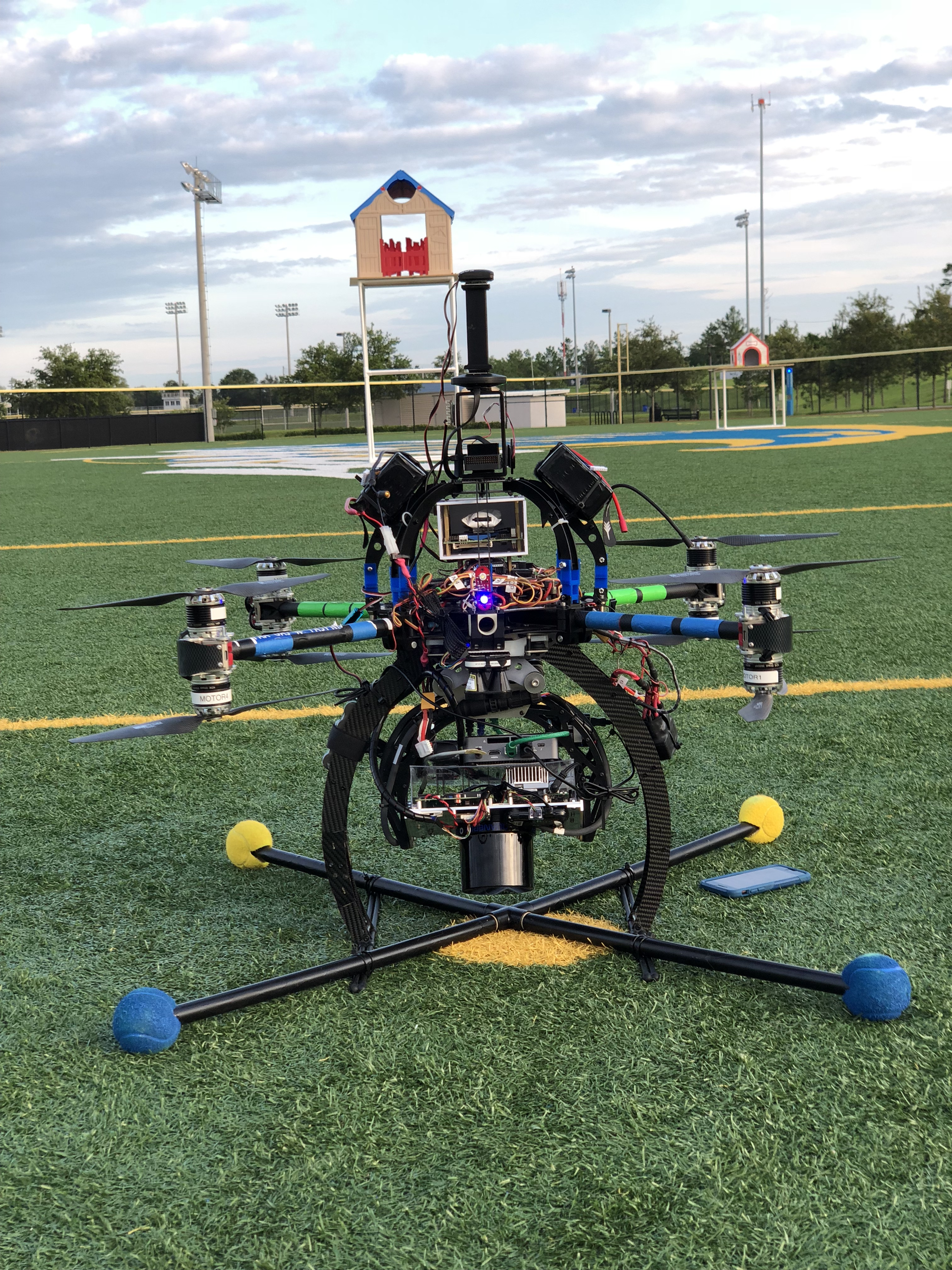Navigating Small UAV’s
Imagine a small Unmanned Aerial Vehicle (UAV, popularly known as a drone) with a measure of autonomy, capable of obstacle avoidance, dynamic mapping and navigation, and automated takeoff and landing. Larger drones can afford the weight of conventional instruments, whereas smaller drones are unable to. To expand applications and reduce costs for smaller UAVs, added autonomy would make them much safer to operate, especially in conditions where GPS signals are limited. The development of small, low-cost, low-power navigation systems that can enable key functions necessary for a small UAV to safely navigate a diverse and potentially congested airspace is needed.
UAV Navigation System Uses Small, Low-Power Sensors

Proof-of-principle drone.
Creare teamed with Embry-Riddle Aeronautical University to develop an advanced navigation system that takes advantage of recent developments in small, low-power, low-cost sensor technology to provide an optical guidance system that can use LIDAR and stereo vision to automatically detect terrain and objects, automatically create maps of the environment, and autonomously navigate UAVs through this environment while avoiding obstacles. We are currently developing a second-generation UAV including stereoscopic and LIDAR sensors for DARPA that can provide navigation in an a priori, unknown, dynamic environment to allow safe autonomy for small UAVs.
Our system leverages the unique capabilities that Creare has developed for optical image analysis and laser scanning, efficiently using on-board embedded graphics processing units to produce real-time three-dimensional models of the UAV’s local environment. We recently tested the system and demonstrated key features of the technology in outdoor obstacle courses and simulated urban environments at Embry-Riddle.
Rich Kaszeta received his M.S. and Ph.D. degrees in Mechanical Engineering from the University of Minnesota, and a B.S. in Mechanical Engineering from Michigan State University. In over 15 years at Creare, he has addressed a multitude of challenges in UAV control, cryogenics, gas separation, thermal-to-electric power conversion, software engineering, turbomachinery, battery thermal management, and biomedical applications.
This story was featured in the Fall 2018 edition of Creare’s People & Technology newsletter.
